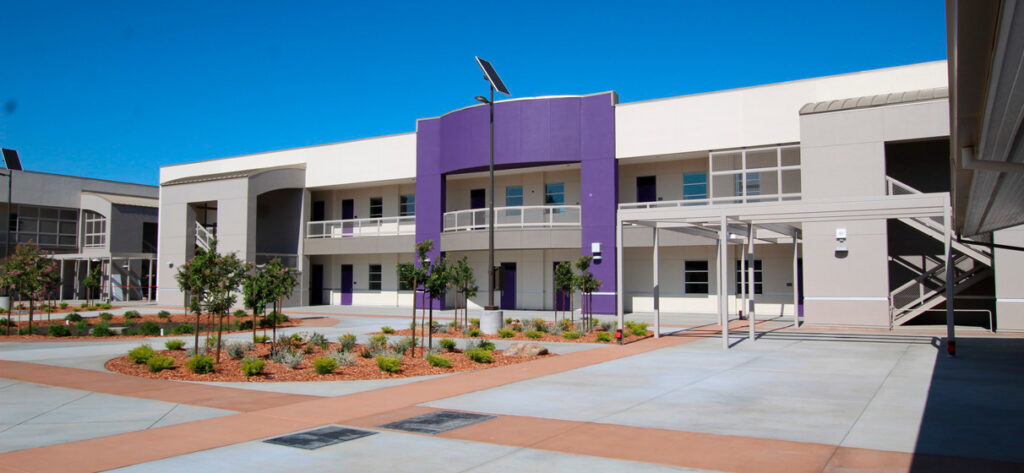With the passage of large-scale bond programs in cities like Los Angeles, Austin and New York, school districts across the nation are tackling the urgent need to modernize aging facilities and construct new ones that will accommodate growing student populations. These bond programs aim to create state-of-the-art learning environments that meet evolving educational needs while addressing infrastructure challenges.
As school districts strive to make the most of their funding, it is essential to address workforce shortages, escalating material costs and compressed project timelines. STV, a leader in Program Management and Construction Management (PM/CM), brings decades of expertise in guiding educational clients through complex projects, where resources are allocated efficiently so projects are delivered on time and within budget.
In this roundtable discussion led by Dave Watson, CCM, vice president and west region manager for the firm’s Southern California region, STV’s experts, KiSeok Jeon, vice president of digital advisory; Ashley McClaran, DBIA, CCM, project executive; Cade McMullin, CCM, area manager; and Daniel Randles, senior project manager discuss how our PM/CM team supports school districts in maximizing bond program investments through strategic planning, workforce planning and programmatic tools – all while keeping the focus on creating exceptional spaces for future generations of learners.
Dave Watson: Balancing urgent priorities with fixed budgets is a common challenge for educational institutions. What are some strategic methods PM/CM firms can help educational institutions make the most of their resources?
KiSeok Jeon: STV is leveraging AI to implement predictive analysis for asset management. Public agencies often manage extensive networks of physical assets across their district. AI’s ability to analyze data, predict maintenance needs and forecast the lifecycle of an asset is proving invaluable in more strategic capital planning and budget allocation.
Ashley McClaran: In using AI for predictive analysis in asset management, our approach goes further by integrating advanced technology with deep client collaboration and customized strategies. We go beyond capturing quantitative data, such as capacity issues or maintenance needs. We bring a nuanced approach by incorporating qualitative insights to understand the community’s true priorities. This allows us to help our clients not only identify critical projects but also prioritize them based on what resonates most with end users and bond program voters. This drives alignment and meaningful outcomes
Daniel Randles: For these multi-year modernization programs we also have to factor in long-term changes in material costs and supply chain delays. To build on our digital and client advisory support, our infrastructure economics team can brings added benefit with grant advisory services – matching the right resources with each initiative. This holistic approach not only supports immediate project needs but also positions clients for sustained success, ensuring their programs remain resilient and well-funded over time.

Dave Watson: What about mitigating workforce delays? How can PM/CM teams help stay on schedule and meet quality standards?
Cade McMullin: This challenge is also complicated by the fact that some areas are prone to natural disasters. In the wake of a crisis, construction teams, contractors, etc. are in high demand for public infrastructure, private projects – everything. In the planning phase, we help the client set themselves apart as an employer of choice for staffing so they’re at the top of the list when the time comes to procure a project. This can mean supporting thoughtful procurement practices, fair and efficient contracting, timely contractor payments and reporting. Our goal is to ease the flow of communication so the clients and contractors and staff can focus on the task at hand – trusting we have the operational and administrative details taken care of.
KiSeok Jeon: That’s also where AI comes back in. We can use it for real-time supply chain monitoring to predict workforce impacts. We focus on applying our resources to where they have the most impact – using AI or process automation to handle repetitive tasks while our team brings their expertise and creativity to ensure quality through hands-on engagement and attention to detail on the project.
Daniel Randles: Getting in front of the Design Development (DD) phase is critical. By involving the right experts during the planning phase, we help clients anticipate and mitigate potential challenges – such as avoiding permit and supply chain delays that can impact emergency relief during a natural disaster. We can also bundle DD sets based on similarities in scope, labor or supplies to build out the total cost estimation and begin construction faster.
Dave Watson: With that said, the ongoing labor shortage remains a significant challenge. How is STV addressing its impact on our clients?
Daniel Randles: This is particularly challenging for educational clients. Typically, major construction takes place in the summer to limit disruptions to students and staff. This is why PM/CM is vital to a project team. The reliance on early, thorough planning and optimized workflows within labor constraints supplement the upskilling and recruitment efforts in the industry.

Dave Watson: In 2022, STV was among the first AEC firms to sign the Equity in Infrastructure (EIP) pledge. How has that involvement impacted our PM/CM work?
Ashley McClaran: Signing the pledge reinforced our efforts to create opportunities for historically underutilized businesses (HUBs). This can mean great impacts for small, local, as well as minority-owned businesses in promoting diverse participation across all phases of a project and prioritize equitable outcomes for the communities we serve. As boots-on-the-ground managers, we’re often able to identify folks on the site or from previous relationships for future leaders who are learning on the job. There’s an untapped wealth of candidates in the trades and groups who have been historically overlooked. Part of what we do is identify those people and give them opportunities to take on more. This approach also helps our clients keep tax dollars within the community, which is especially significant for projects funded primarily by bonds, as it builds trust with taxpayers who recognize these practices can strengthen local economies.
Cade McMullin: So many of these MWBEs and DBEs are part of the communities that they’re helping to improve on these projects. Supporting these local businesses only enhances their capacity but also ensures we’re contributing to the long-term vitality and growth of the communities we serve.







